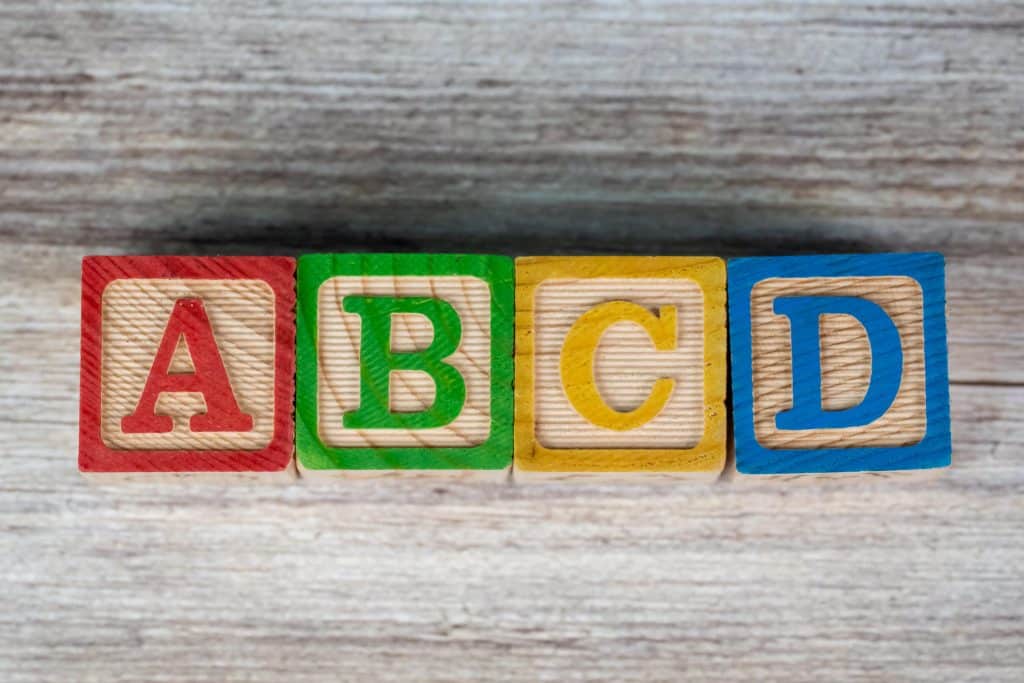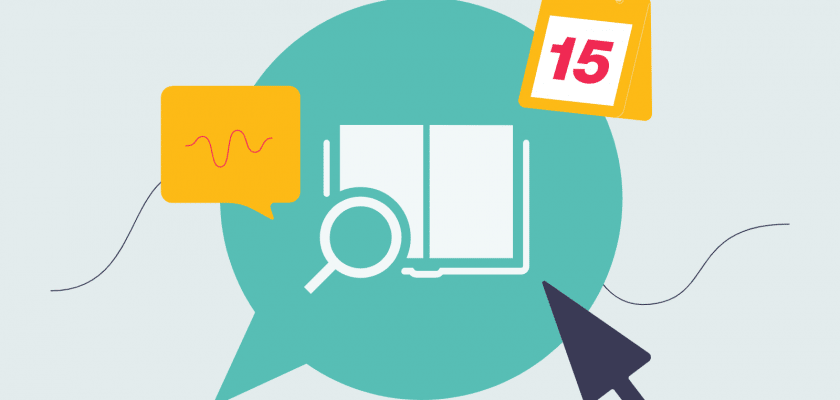We’ve all heard students say, “I’ll never need this in my life.”
Teacher, forgive them, for they do not know what they are saying. They don’t know how hard you’ve worked on your lesson plan and how much thought you need to put into each lesson plan’s objective.
It’s you who knoweth the true value of preparation. You get that entering the classroom without a clear understanding of what you need to accomplish before the bell rings may cause things to go south—fast.
But how can you be sure that the goal of your lesson is indeed well-written and precise enough? We’ll show you how to do this and give you both good and bad examples to ensure your lesson objectives never miss the mark.

Source: @musiena via Twenty20
What Should Your Lesson Plan Objectives Look Like?
A lesson plan objective should give you a clear and concise idea of what you want to achieve with a lesson. You’ll write the rest of the lesson plan to help you accomplish your objective.
Think of it as a lighthouse that helps you stay on course while navigating the treacherous waters of keeping the students’ attention alive and kicking.
In practice, an objective is a sentence that needs to be S.M.A.R.T.:
- Specific
- Measurable
- Attainable
- Relevant
- Timely
The difference between a well-written and poorly defined objective is whether or not it hits all these boxes. If you can’t measure an objective, how can you know if you’ve achieved it?
An objective must provide answers to why, how, and when.
How To Write an Objective for a Lesson Plan—Bloom’s Taxonomy
The first step in writing an objective is choosing a measurable and specific verb. Depending on what you’re teaching and the age group you’re working with, you’ll need to choose an active verb that’s adjusted to your students’ abilities. You need to have lower expectations when writing a lesson plan for first and second graders than you would with high school students.
According to Bloom’s taxonomy, there are six levels of learning:
- Remembering
- Understanding
- Applying
- Analyzing
- Evaluating
- Creating
These levels are arranged in a specific hierarchy, meaning that you need to start from the first one and go forward. You can’t use a kindergarten lesson plan and expect the students to provide a critical evaluation of the provided information.

Source: @olgakhorkova via Twenty20
Verbs To Use in a Lesson Plan Objective
Every level of learning has an appropriate set of active verbs that you can use to write a measurable objective. You need to avoid verbs such as know, understand, appreciate, learn, be familiar, analyze, and others that don’t express a result you can quantify and assess.
Check out the table below to see some examples of verbs that you can use for each level of learning:
| Level of Learning | Verbs To Use |
| Remembering | Define Recall Recognize List Name Repeat State Duplicate Reproduce Select Underline |
| Understanding | Describe Identify Locate Classify Exemplify Compare Infer Report Discuss Explain Differentiate |
| Applying | Implement Execute Demonstrate Interpret Operate Schedule Sketch Solve Use Construct Perform Find |
| Analyzing | Attribute Organize Differentiate Question Test Experiment Examine Compare Contrast Relate Separate Distinguish Conclude Break down |
| Evaluating | Check Critique Argue Defend Judge Support Value Appraise Weigh Derive Conclude Integrate |
| Creating | Plan Produce Generate Design Construct Formulate Develop Assemble Investigate Author |
Note that some verbs can appear in different stages of learning. For instance, you can ask students to compare information in comprehension, analysis, and evaluation stages, but the level of comparison needs to be more advanced as your students progress through Bloom’s pyramid of learning.
The ABCDs of Writing Objectives for Lesson Plans
Apart from choosing an appropriate verb, the rest of your lesson plan objective also needs to be written in line with the S.M.A.R.T. acronym. A well-thought-out objective covers every aspect of the lesson and answers every question regarding your lesson plan.
You can refer to the ABCD checklist to ensure you hit all the necessary points within your objective. The ABCDs of writing a lesson plan objective are as follows:
- Audience—Who is the objective for? You should aim your objective at students and not yourself
- Behavior—What will students achieve? Use a measurable and specific verb to show what students will gain after completing a lesson
- Condition—How will students show their improvement? You should define the exact conditions under which they will need to demonstrate their knowledge, skill, or attitude
- Degree—How well should students be able to perform? This element of the objective defines the minimum criteria that students need to fulfill to reach the goal
For more context, here’s an example of a well-written objective split into its ABCDs:
| Example Objective | Audience | Behavior | Condition | Degree |
| Students can tell the time on an analog clock with 90% accuracy | Students | Tell the time | On an analog clock | 90% accuracy |

Source: @cloudyew via Twenty20
Lesson Plan Objective Examples
A lesson plan objective depends on a variety of factors, including grade, subject, and students’ learning abilities. Another important factor is the lesson plan’s scope, i.e., whether you’re using a weekly lesson plan template or you want to plan an individual lesson instead.
If you’re struggling to come up with a specific, measurable, and time-bound objective, go through these examples to see what a well-written objective should look like:
- After reading From Caterpillar to butterfly students can draw a diagram of a butterfly life cycle in a graphic organizer
- Students can name all parts of a compass rose accurately after learning the song about cardinal directions
- After the lesson about the Pythagorean theorem, students are able to solve eight out of ten geometry problems using the theorem
- Students can contrast Poe’s tone with that of another Romantic author in a short essay after reading The Tell-Tale Heart
Bad Examples of Objectives in a Lesson Plan
Great objectives use active verbs that you can quantify easily and say with certainty whether the wanted action has been completed or not. Bad objectives are too vague and don’t tell what students need to do, when they should do it, and how. They usually don’t focus on a single behavior but list out several at the same time.
To make sure you don’t make the same mistakes, check out the examples of what your lesson plan objectives shouldn’t look like:
- Enjoy speaking Chinese
- After the lesson, students will be familiar with the American law
- Students will learn about lakes
- Students will understand the process of photosynthesis
- By the end of the lesson, students should write a summary, recall parts of the story orally, and predict what will happen next in the story
- By the end of the course, students will have a deeper appreciation of literature in the 20th century
Struggling With Your Lesson Plans? Use a Ready-Made One
Nobody becomes a teacher to get bogged down in filling out administrative forms and lesson plan templates. If you write your own lesson plans, you might spend hours staring at an empty sheet of paper, trying to think of every single detail you need for your lesson.
The good news is that you can find ready-made lesson plans online. The not-so-good news is that there are plenty of poorly written resources out there (especially free ones). So, how do you find a good one?
You can find thousands of lesson plans online for every grade, from preschool to high school, covering various subjects, such as math, physics, and life studies. The catch is that the majority of these websites charge per download and offer a preview that doesn’t give enough information about a lesson plan.
You need to spend hundreds of dollars each year to go through lesson plans that are ultimately unusable. A large portion of these plans don’t meet curriculum standards, don’t have clear, well-defined objectives, and don’t take into account various learning styles.
The only way to avoid spending money on useless lesson plans is to avoid being charged per download. You don’t walk into a classroom with a collection basket and go from one student to another before you start teaching, either.
Source: GIPHY
Teach Simple—Unlimited Teaching Materials for Teachers by Teachers
Teach Simple is a subscription-based platform that offers high-quality teaching materials for teachers of all subjects and grades. You no longer have to go from one website to another with your fingers crossed that the first lesson plan you download is miraculously a good one.
Our materials are made by teachers with hands-on experience in classrooms who know the requirements for a well-planned lesson. Here’s a preview of the materials you can find on Teach Simple:
- Reading Comprehension: Using Graphic Organizers To Identify Main Ideas
- How To Write a Book Report: What Is a Book Report?
- Will & Going To | Upper-Intermediate Lesson Plan
- Setting Targets Lesson Plan | Business English Level 2
- Major and Minor Political Parties
- Telling Time, Elapsed Time Math Notebook
- Advanced Reading and Writing Skills
- Time and Money
- 100 Elementary Math Workouts and Practical Teaching Tips
- Multiplication and Division | Academic Workbook
- Brainy Acts With Analogies: Logic Activities
You’ll be able to download as many materials as you want and not spend one extra dime on them.
You can sign up for free with our 30-day trial. Use this period to download hundreds of lesson plans without any cost.
Why Use Teach Simple
You no longer need to browse through various websites and make a complete mess out of your browser bookmarks. Teach Simple will give you access to all materials that you need.
Our platform offers unique advantages to our subscribers:
- Unlimited downloads—Most websites charge up to $15 per material. After your trial ends, you’ll only have to pay an affordable subscription fee. You’ll be able to download every material available without taking out your credit card again
- High quality and standard alignment—Teach Simple ensure that our materials meet official curriculum requirements and important quality standards. One teacher creates, and another teacher reviews every material that gets published
- Resource diversity—With Teach Simple, you’ll be able to enrich your classes with various resources, such as lesson plans, flash cards, games, activities, e-books, and worksheets. Lesson plans alone cover all kinds of topics and subjects for different grades—from science topics appropriate for preschoolers to English language classes for foreign students of all ages
- Revenue sharing—Teach Simple knows the challenges that come with being a teacher. That’s why 50% of our monthly revenue goes back to our contributors
- Special resources—Online materials often neglect students that require special attention or skills that are not strictly academic. Teach Simple is different. You can use our platform to find various materials for speech therapy, social-emotional learning, and various life skills
How To Use Teach Simple
Teach Simple’s platform is super easy to use. When you visit our website, you can choose materials by subject, grade, and type. For a more fine-tuned search, use numerous useful filters on the left side of your screen. For instance, you can easily find spelling lesson plans for third graders or flash cards made for kindergarten math lessons. If you have a specific keyword in mind, the platform’s search bar will help you find it right away. Stop wasting your time and money on dozens of websites that make you sift through mediocre materials in hopes of stumbling on gold. Sign up for Teach Simple and get ready for your class without sacrificing your free time.

